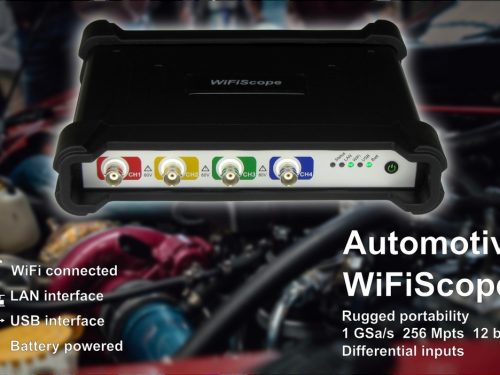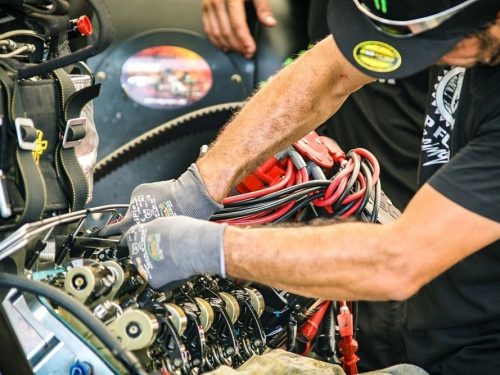As someone who’s spent over 15 years immersed in automotive electronics, I’ve witnessed a breathtaking transformation. Vehicles have evolved from purely mechanical machines into sophisticated, software-driven platforms teeming with connectivity. This digital revolution brings incredible features – enhanced safety, seamless infotainment, remote diagnostics – but it also throws open the doors to a new generation of threats. The very technology that makes modern cars so capable also makes them vulnerable. Automotive cybersecurity is no longer a niche concern; it’s a fundamental necessity for protecting not just data, but the physical safety of drivers and passengers in our increasingly connected world.
The expanding digital frontier and its inherent risks
Today’s vehicles are essentially rolling data centers. They can boast over 100 million lines of code, managed by up to 150 Electronic Control Units (ECUs), all communicating through complex internal networks like CAN, LIN, and MOST. This internal complexity is now increasingly interwoven with the outside world through Wi-Fi, Bluetooth, cellular modems (3G/4G/5G), USB ports, and dedicated mobile apps. Features like Over-the-Air (OTA) updates, remote start, vehicle tracking, and sophisticated infotainment systems rely on this constant connectivity. While these advancements enhance the driving experience, they dramatically expand the vehicle’s ‘attack surface’ – the number of potential points an attacker could exploit. Each connection, each piece of software, each ECU represents a potential vulnerability. We’re generating unprecedented amounts of data too, estimated at 25 gigabytes per hour per vehicle, creating a rich target for data theft and misuse. This intricate web of technology means a flaw in one area, perhaps seemingly innocuous like the infotainment system, could potentially become a gateway to more critical vehicle functions.
The stark reality of these risks was thrust into the spotlight back in 2015. Security researchers Charlie Miller and Chris Valasek demonstrated, quite dramatically, how they could remotely hack into a Jeep Cherokee travelling on the highway. As detailed in reports like one from Kaspersky, they exploited a vulnerability in the Uconnect infotainment system to gain control over steering, brakes, and even the engine – all from miles away. This wasn’t science fiction; it was a wake-up call that forced Fiat Chrysler to recall 1.4 million vehicles. It proved that the theoretical threat of vehicle hacking was very real and had potentially devastating consequences. Since then, numerous other vulnerabilities have been exposed across various manufacturers, highlighting that this isn’t an isolated problem but an industry-wide challenge. Even seemingly simple communication pathways can be compromised through techniques like Man-in-the-Middle (MitM) attacks, where attackers intercept and potentially alter data flowing between vehicle components or between the vehicle and external servers, posing a significant threat as discussed by Dark Reading.
Vulnerabilities exposed: Real-world threats and attack vectors
The ways malicious actors can target vehicles are diverse and constantly evolving. Infotainment systems, with their rich features and multiple connection points (Wi-Fi, Bluetooth, USB), often serve as an initial entry point. As highlighted by Help Net Security, poor architectural design might allow attackers to pivot from these less critical systems to networks controlling core driving functions. Telematics systems and the Application Programming Interfaces (APIs) that allow mobile apps and third-party services to interact with vehicles are another major area of concern. A striking example involved researchers exploiting API weaknesses in Kia’s web portal, enabling them to track vehicles, unlock doors, and even start engines remotely, simply by knowing the VIN or license plate, as reported by Wired. This wasn’t an isolated incident; similar API and infrastructure vulnerabilities were found across 16 major car manufacturers, allowing researchers to perform actions ranging from engine control to accessing internal company systems and customer data, detailed in a SecurityWeek report.
Other significant vectors include Over-the-Air (OTA) updates, which, while essential for patching vulnerabilities, can themselves be hijacked if not properly secured, potentially allowing attackers to install malicious firmware. Mobile devices and the apps used to interact with cars present another risk; vulnerabilities in the app or the phone’s operating system could be leveraged to gain vehicle access, a threat vector explored by Security Intelligence. The complex automotive supply chain is also a weak link. A vulnerability introduced by a Tier 2 or Tier 3 supplier in a small component could ripple through the system. Even the charging infrastructure for electric vehicles (EVs) presents a novel threat, with concerns that coordinated attacks on EVs could potentially destabilize the power grid. We also cannot discount the human factor – phishing attacks targeting employees at dealerships or manufacturing plants, or even insider threats, can compromise security. The massive disruption caused by the cyberattack on CDK Global, a software provider for thousands of dealerships, underscores the vulnerability of the entire ecosystem, as reported by Automotive Dive.
Understanding these threats requires deep analysis. Cyber Threat Intelligence (CTI) is becoming crucial for proactively identifying and mitigating risks. Research efforts, like the development of the Acti dataset detailed in Scientific Data, aim to provide structured data from real-world incidents to train AI models for better threat detection and analysis in connected autonomous vehicles (CAVs). This kind of research is vital for staying ahead of attackers who are constantly refining their techniques, from exploiting keyless entry systems with relay attacks to sophisticated CAN injection methods that bypass physical security measures, as documented on platforms like Wikipedia.
Building defenses: Industry responses and regulatory frameworks
The automotive industry, jolted by high-profile hacks and mounting regulatory pressure, is actively working to bolster defenses. A significant step was the formation of the Automotive Information Sharing and Analysis Center (Auto-ISAC) in 2015, creating a platform for manufacturers to share threat intelligence and best practices collaboratively. Recognizing the need for coordinated research and guidance, initiatives like the NIST Automotive Cybersecurity Community of Interest (COI) have been established to bring together industry, academia, and government to tackle challenges related to cryptography (including quantum resistance), supply chain security, and the unique risks posed by AI in autonomous vehicles. The fundamental shift is towards integrating security from the very beginning of the design process – a concept known as ‘security-by-design’ or ‘secure-by-design’. This means cybersecurity isn’t an afterthought but a core engineering principle, just like physical safety.
This shift is strongly driven by new regulations. The United Nations Economic Commission for Europe (UNECE) World Forum for Harmonization of Vehicle Regulations (WP.29) has been pivotal. Its R155 regulation, explained well by Thales Group, mandates a certified Cybersecurity Management System (CSMS) for vehicle manufacturers. Effective in the EU since July 2022 for new vehicle types and mandatory for all new vehicles sold from July 2024, it requires OEMs to manage cyber risks throughout the vehicle lifecycle, secure vehicles by design, detect and respond to incidents, and provide secure software updates (including OTA). This regulation has broad international impact, being adopted by dozens of countries including South Korea and Japan.
Complementing the WP.29 regulation is the ISO/SAE 21434 standard, “Road Vehicle – Cybersecurity Engineering.” As outlined by Cybellum, this standard provides a detailed framework and common language for cybersecurity engineering across the automotive supply chain. It defines processes for risk assessment, threat modeling, vulnerability management, and incident response, emphasizing shared responsibility between manufacturers and suppliers. While ISO/SAE 21434 provides the ‘how-to’ guide for engineering practices, WP.29 R155 provides the legal mandate, forcing the industry to demonstrate compliance. Other bodies like the US National Highway Traffic Safety Administration (NHTSA) have also issued best practice guidelines, and agencies like CISA are proposing stricter incident reporting requirements for critical infrastructure, which includes the automotive sector. These regulatory efforts collectively push the industry towards a more mature and standardized approach to cybersecurity.
Charting the course for secure mobility
While regulations and standards provide a crucial foundation, achieving robust automotive cybersecurity is an ongoing journey, not a destination. The threat landscape is dynamic, and requires continuous vigilance, adaptation, and investment. A truly effective strategy must be holistic, extending beyond the vehicle itself to encompass the entire enterprise, including production facilities, backend servers, and the complex web of suppliers. As PwC emphasizes, this requires strong commitment from leadership, clear processes for incident response, diligent supply chain risk management, and investment in advanced security tools and threat intelligence.
Key technical measures include implementing strong encryption for data both at rest and in transit, robust authentication mechanisms for all communication (internal and external), secure boot processes to ensure software integrity, and network segmentation to isolate critical systems from less sensitive ones like infotainment. Establishing dedicated Security Operations Centers (SOCs) for continuous monitoring, threat detection, and rapid response is becoming increasingly vital. Furthermore, securing the development lifecycle through practices like threat modeling early in the design phase and adhering to secure coding guidelines (like MISRA C or CERT C) is essential.
Looking ahead, the rise of autonomous vehicles (AVs) introduces new layers of complexity, particularly concerning the security and safety of AI algorithms. We need reliable methods to manage AI cybersecurity risks, including defenses against adversarial attacks. Data privacy also remains a critical concern. As vehicles collect ever more granular data about our driving habits, location, and even personal preferences, ensuring transparency and user control over this data is paramount, a point underscored by Trend Micro. Balancing the drive for innovation and new data-driven services with the non-negotiable requirements of security and privacy will be a defining challenge for the industry.
From my perspective, the journey towards secure automotive systems mirrors the evolution of safety itself. Just as seatbelts, airbags, and ABS moved from novelties to standard, expected features, robust cybersecurity must become an intrinsic, non-negotiable part of every vehicle’s DNA. It requires a collaborative effort involving manufacturers, suppliers, regulators, security researchers, and ultimately, informed consumers. The road ahead demands constant learning and adaptation, but securing our digital highway is essential for ensuring a future where automotive technology continues to enhance our lives safely and reliably. The challenge is significant, but the stakes – our safety and security on the road – couldn’t be higher.


